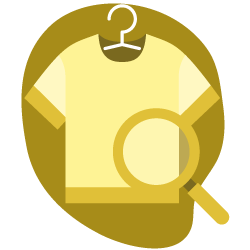The pandemic that is raging across the world has changed life for all of us at both a business and personal level. We’ve all had to adapt quickly to life-altering change just to survive and attempt to thrive under highly charged emotional circumstances.
Change can be very difficult, particularly if your current way of doing business has proven successful for many years. But, as Elon Musk, who knows a little about both selling and technology, has said, “Some people don’t like change, but you need to embrace change if the alternative is disaster.” Businesses the world over will need to embrace change if they are to weather the coming storms of the new world we find ourselves living in. To thrive, they will need to quickly alter their methods of customer communication and engagement.
How Fashion is Adapting to Technology
Nowhere has the need for adaptability and increased change rung more true then in the fashion industry.
In the past, this sector has relied on the in-person tactical and visual aspects of presenting their products to customers. Brick and mortar stores have always enticed buyers with carefully and beautifully designed shop windows. Getting customers into the store was very helpful as it prompted buyers to see, touch, and try-on fashion products.
Another clear benefit of having customers in the store browsing and buying is that it provided retailers with many opportunities for cross-selling, particularly with items such as accessories. In store retail has been a standard way of doing fashion business for decades.
However, even prior to the pandemic, consumers were shifting the way that they shopped, browsed, and spent their money.
Fashion Finds the Internet
In the last decade, most large fashion retailers have created a strong online presence to complement their physical stores. Also, there are many newer fashion companies that operate solely online, without the need for accompanying brick and mortar outfits. With most companies moving to a partial online model to accommodate tech-savvy shoppers, fashion has had to find ways to reach and engage new customers, and retain those already loyal to their brand.
Even with the downside of losing the tactical aspect of sales, there are many things that make clothing and accessories perfect for virtual commerce. Fashion naturally lends itself to online visual sales methods, and technology can be leveraged in so many ways to help customers find parallel merchandise, accessories, and merchandise that they might like based on prior purchases, browsing history, and saved “favorites.”
Perfecting the visual side of online sales is vitally important to hold consumer interest, but it won’t mean much if customers aren’t finding the products. During this particular crisis, and most certainly going forward, what is becoming most important is the use of organic search.
In the last few years, the fashion industry has become more reliant on influencers and media to get the word out about products, but even these methods are not as advantageous as they were pre-pandemic. Many companies are experiencing declines in organic traffic simply because their merchandise is non-essential and is not included in trending search phrases.
The answer to this problem, now and going forward, is the use of structured data.
If You Want Quality Organic Traffic, You Need Structured Data
Structured data helps combat problems with organic search loss by helping search engines better understand your content.
Structured data categorizes information on the Internet, in web pages, and in public server email. Schemas are created, maintained, and promoted for structured data by Schema.org. The Schema.org group was originally founded by Google, Microsoft (Bing), Yahoo, and was later joined by Yandex (Russia’s largest search engine).
Most search engines now use structured data to increase accuracy and make the most of the content on websites. In order to understand structured data, it helps to understand what Schema.org is. As paraphrased from schema.org:
Schema.org provides a collection of shared vocabularies that webmasters can use to markup their web pages in ways that are understood by major search engines such as Google, Bing, Yahoo and Yandex.
Marking up web pages with shared vocabularies using Schema.org isn’t an SEO “strategy”; it’s the utilization of the foundational language that all machines need to understand your content.
What this means specifically for fashion brands is that this technology can be leveraged to increase relevant, organic traffic. Traffic itself is never a goal; it’s much more important to get traffic that leads to sales. Getting droves of people to your website only to have them look and leave isn’t nearly as helpful as getting more shoppers who will like and want to buy your products.
There are multiple types of structured data markup, but there are three in particular, specific to Google, that are most beneficial to those in the fashion industry:
- Product markup – markup can be added to product pages so Google can provide detailed information such as price, ratings, availability, and images to searchers directly in the search results page
- Sitelink Search Box markup – A sitelinks search box is a fast method for shoppers to search your website or application immediately on the search results page
- Breadcrumb markup – This markup provides a breadcrumb trail on a page that indicates the page’s position in the hierarchy of the entire website
Using Product, Sitelink, and Breadcrumb Markup to Improve Organic Traffic to Your Website
When you use markup on web pages, there are specific properties that are required and others that are suggested. There are structured data type definitions that are required so that the content on your page is eligible for display as a Google “rich result.” While you need to have the required properties, the recommended are also important, though not required. Adding additional recommended properties will provide searchers with a better search experience by giving them more information and greater details about your products.
To get a better idea of how markup and schema work, the tables below show the required properties for each markup product, sitelink, and breadcrumbs, and the recommended properties for products.
For more information about required and suggested properties, and how to use them in web pages to increase the visibility of content, visit the Schema.org website and check out the Get Started pages.
Product Markup
The Product schema, in regard to the fashion and retail industry, includes items such as outerwear, tops, bottoms, dresses, suits, shoes, hats, scarves, sunglasses, jewelry, and other accessories.
Including a product markup property for each individual item being sold on the website is vital if you want to increase organic traffic and sales. The more detail a description has the better. One or more clear, expandable images of each product, on a white background, is recommended.
The required markup properties for product pages are:
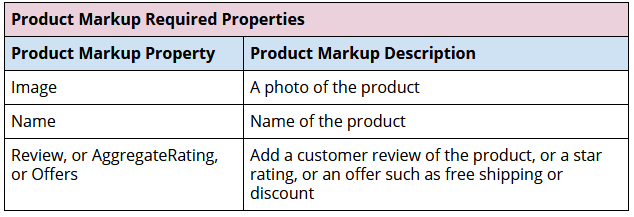
Some recommended product markup properties:

Sitelink Search Box Markup
The sitelink search is an embedded search box that gives the searcher a way to look for items in the entire website directly from the search results page.
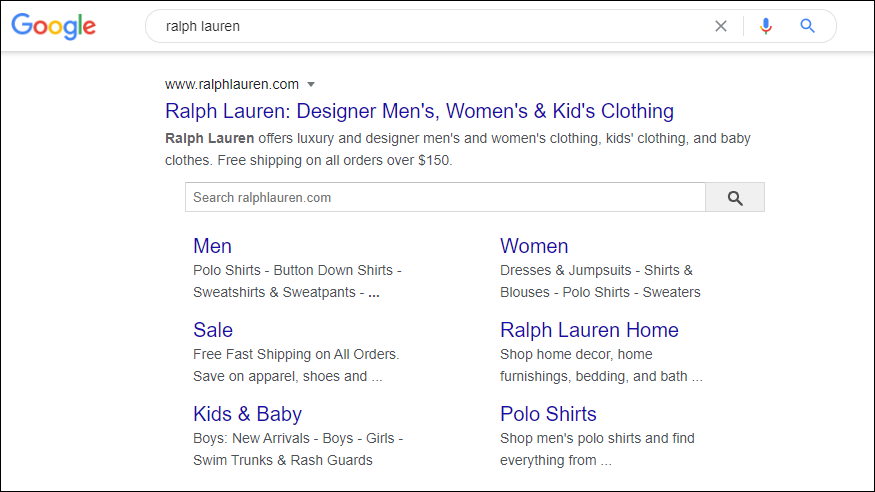
If the website content is well defined and has quality properties and content, the search box might embed without any manual intervention from a webmaster. However, you can increase the likelihood of the sitelink search box by using structured data.
The Sitelink Search Box required properties are:
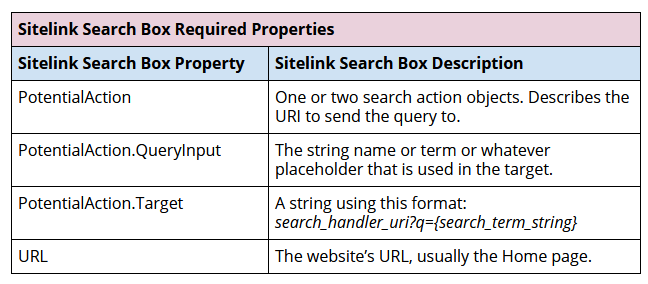
Breadcrumb Markup
A breadcrumb markup uses a Breadcrumb List. It’s a trail on a page that shows what position is of the page in the entire hierarchy of the website. Searchers can use the breadcrumb to navigate up the entire hierarchy in order, or at any point along the trail.
There’s only one required breadcrumb property, the ItemListElement, but it requires ListItems to set the navigation.

The ListItem provides details of each item in the list. List items are used to define each breadcrumb, or page, in the website. The following are the required properties of ListItems:
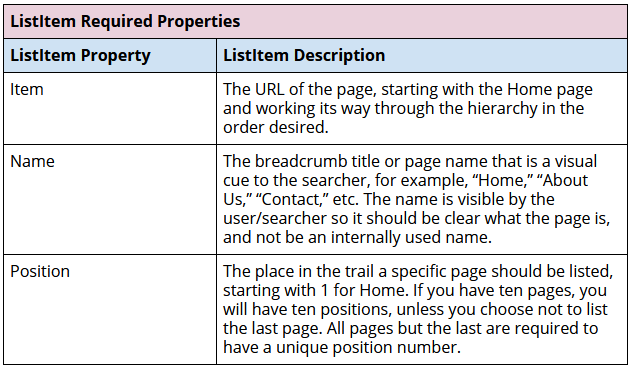
Summary
The unprecedented impact of the Coronavirus pandemic on fashion retail businesses which are considered “non-essential” has been stunning. Even after the world is back to business-as-usual, the trend to purchase from home will continue to grow; it was growing before the pandemic, and if the work-from-home trend continues, people will also be likely to continue to also shop online.
Organic search losses can be devastating even in the best of times. Using structured data is a way to talk to machines directly and gain search engine rank. Using markup properties will greatly help fashion retailers create a flow of quality, organic traffic.
Three of the most useful markup types for fashion retailers are Product, Sitelink search box, and Breadcrumbs. There are other required and recommended properties that can be used to make the most of SEO, however, if these three are well utilized and implemented, particularly the products markup, over time fashion retailers will experience a positive shift in the amount of quality, organic traffic they receive to their websites.
